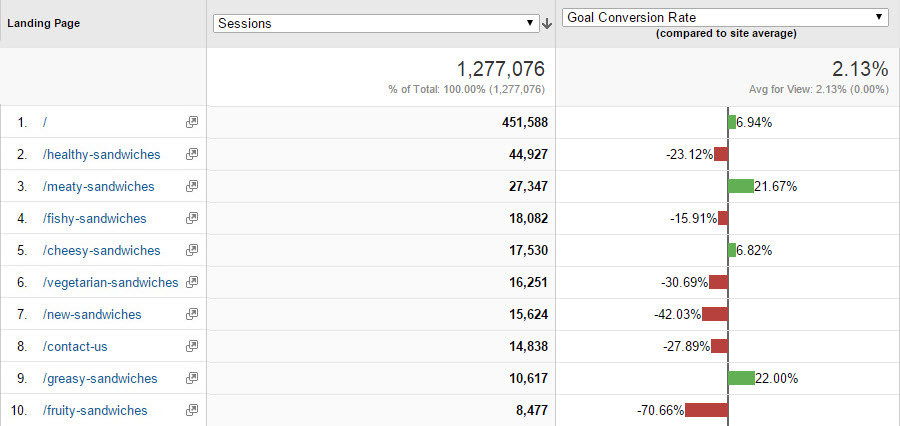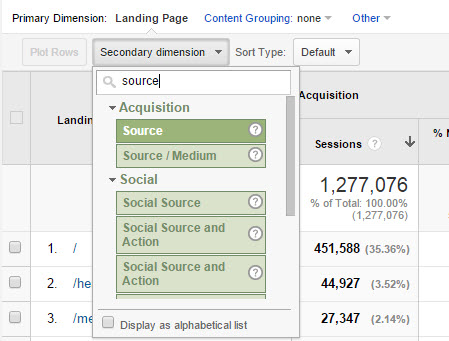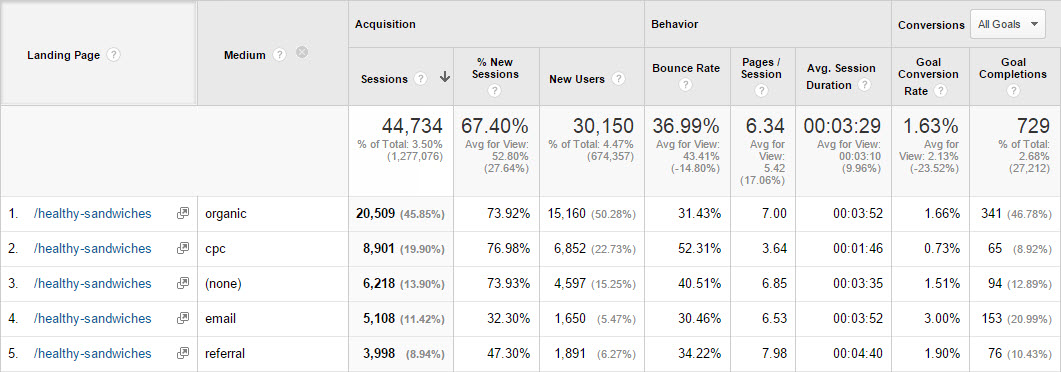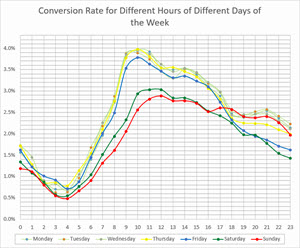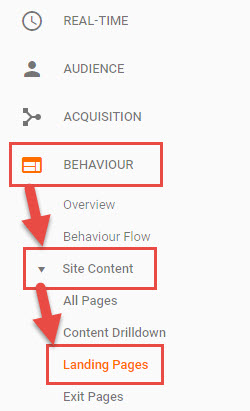 The homepage is not always the first page a visitor sees when they arrive on your website. Visitors have different levels of intent and can find your website in several ways . This will determine the page they land on when they visit your site. In this post, I’ll show you how to quickly analyse your landing pages in order to identify the best and worst performers.
The homepage is not always the first page a visitor sees when they arrive on your website. Visitors have different levels of intent and can find your website in several ways . This will determine the page they land on when they visit your site. In this post, I’ll show you how to quickly analyse your landing pages in order to identify the best and worst performers.
Finding the Most Popular Landing Pages
You can use any web analytics program, such as Google Analytics, to get a landing page report showing the user metrics for the different web pages your visitors landed on. To get the best results, start by selecting a significantly large date range, so you’ll have as much historic data as possible. Make sure the page design was the same throughout this date range and that the goals and any applicable ecommerce data were fully tracked on all days.

In Google Analytics, the landing page report can be found by visiting: [Behaviour > Site Content > Landing Pages]
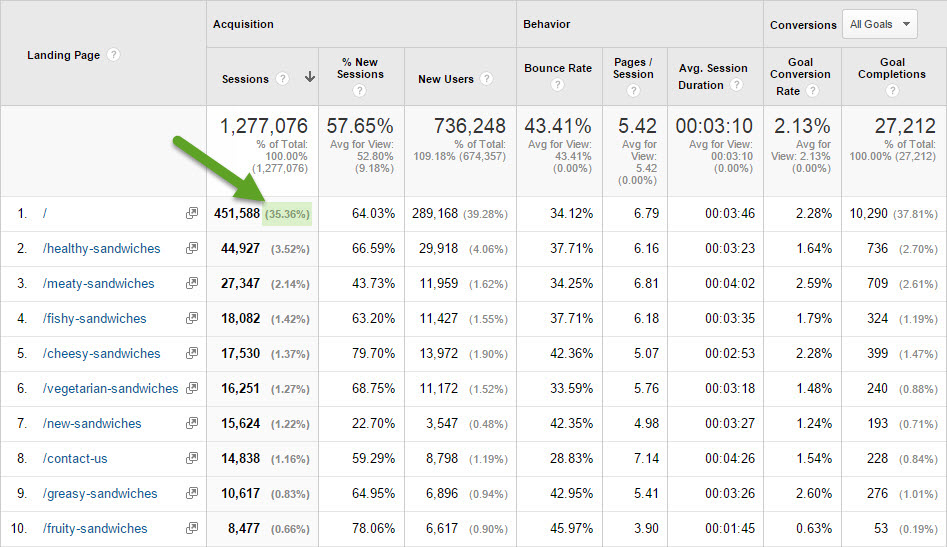
In the example above, we can see that only around 35% of visitors land on the homepage (denoted by the “/”). The other 65% of visitors mainly land on specific sandwich category pages, or the contact page.
Comparing Landing Page Statistics
Starting with the most popular landing pages, it’s important to check key factors such as:
- Bounce Rate which is the percentage of people who enter the website and then leave without visiting another web page. This roughly highlights the percentage of people who didn’t find what they were looking for. They may have pressed the back button on their browser, or closed their browser window without interacting with your site.
- Pages / Session which is the number of web pages each visitor views on average after landing on the webpage. Compare this metric with other landing pages to determine if a particular page is performing better or worse than average.
- Avg. Session Duration which is the average time a visitor spends on the whole website after landing on a certain web page. Again, this metric should be compared to the other landing pages to determine how particular pages are performing.
- Goal / Ecommerce Conversion Rate which can show you the percentage of visitors who convert from a specific landing page – if goal tracking or ecommerce tracking is setup correctly. This metric should be compared to the average conversion rate.
Using the example above, we can visually spot relatively good or bad landing page statistics, if they differ greatly from the average shown at the top:
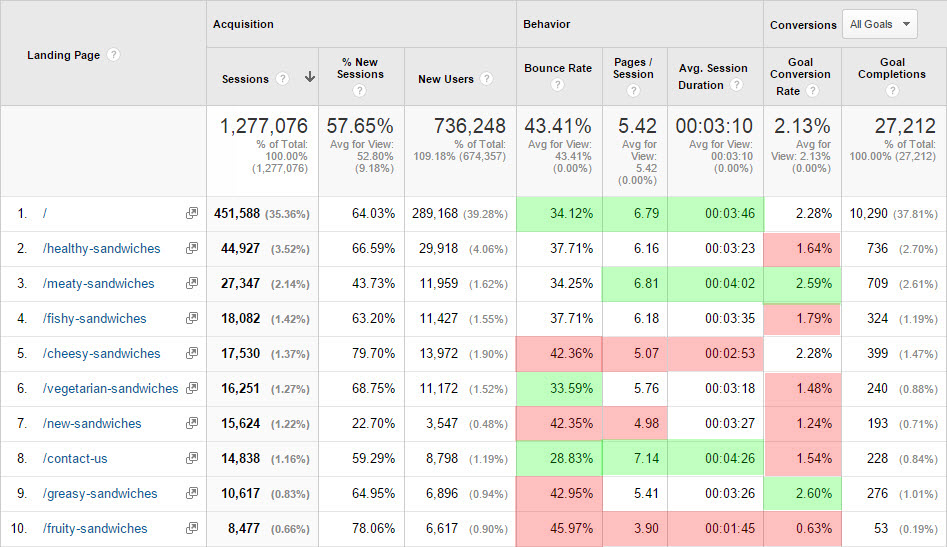
The areas I’ve highlighted are subjective but you can clearly see that the “Fruity Sandwiches” and “New Sandwiches” pages are poor performers on most of the important metrics and the “Meaty Sandwiches” and “Homepage (/)” perform much better.
Google Analytics does have a comparison tool to make this a little easier to visualise. You can find it near the top right of the results table shown below:
![]()
Using this tool, you can easily focus on one statistic at a time and quickly spot the best and worst landing pages.
Historic Landing Page Statistics
Clicking on an individual landing page allows you to see statistics for that page alone. You can also use the filter or segment options to do this.
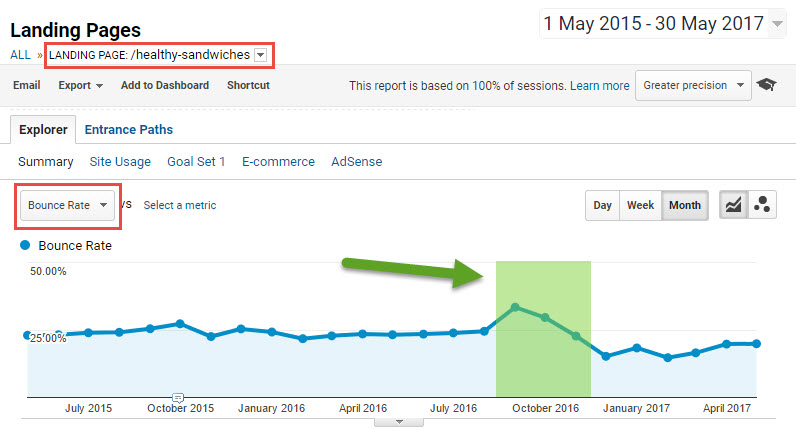
If a big change has been made to a web page, you will be able to clearly see its effect on metrics while looking at a weekly or monthly view on the chart. In the example above, split testing was performed over a period of four months, which initially had a detrimental effect on the bounce rate but eventually improved the overall bounce rate (highlighted in green).
Comparing two metrics at the same time can reveal useful information about your landing pages over time:
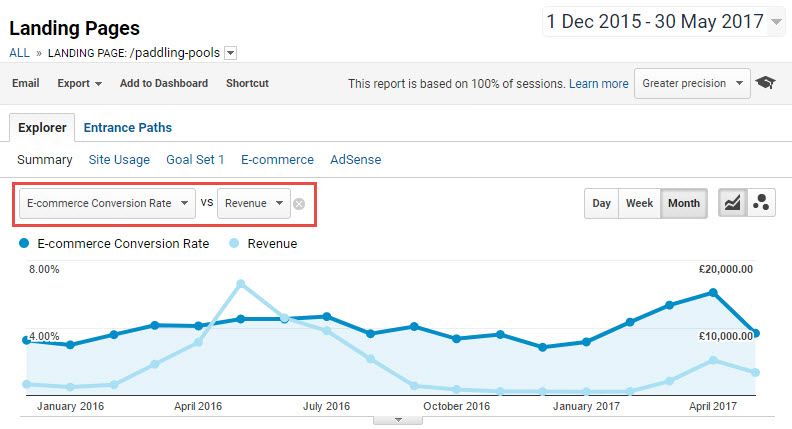
Ecommerce Landing Page Statistics
If the website uses ecommerce tracking to record revenue amounts, then you can see how much each landing page is worth in monetary values. Using the pie chart setting, you can see how much each landing page contributes to the overall revenue.
![]()
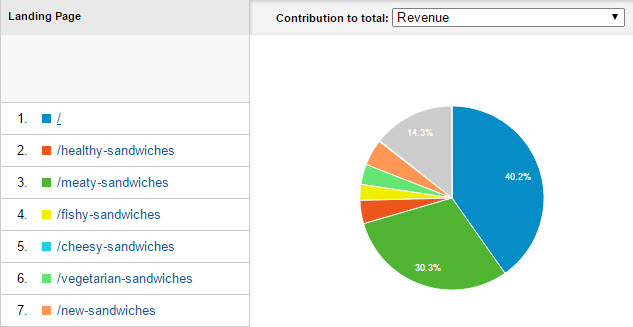
Note: Often, the homepage will contribute the most to the landing page revenue because it’s the typical entry point for people who already know the brand. These people are much more likely to make a repeat purchase. Search engine results for brand names typically lead to the homepage.
Separating Out Landing Page Statistics By Secondary Dimensions

There are many reasons why a person ends up on a website, including entering the website:
- Directly by typing in the the web address manually.
- Through a branded search term on a search engine.
- Through a non-branded search term on a search engine.
- Through a paid advert (text, banner, shopping listing, video, etc).
- Through a paid remarketing advert (ads shown to previous website visitors or customers only).
- Through a link on another website or social media platform.
- Through a link on an email.
Also, there’s a significant number of different types of visitors such as:
- Desktop, mobile or tablet users.
- Users in different locations.
- Users who speak different languages.
- Users with different demographics such as age, genders, etc.
- Users with different, interests, etc.
- Users with different browsers, internet connections, etc.
Combining these different groups of users can lead to cloudy statistics where the averages muddy the waters when identifying good and bad dimensions. Once landing pages have been narrowed down, it’s important to then look at differences in these key dimensions to see which segments of users are performing better or worse than average.
You can add a secondary dimension to the landing page report to allow you to filter in or out segments of visitors for each landing page:
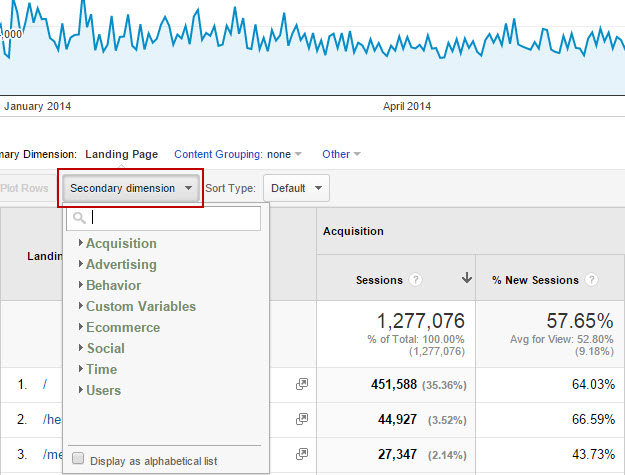
The most useful secondary dimensions include:
- Traffic Sources – Where the visitor was before entering the website (google, bing, newsletter, etc.)
- Traffic Medium – Which medium the visitor found the website through (direct, organic, cpc, email, etc.)
- Campaign / Ad Group – The pay-per-click or other online marketing campaign name which brought in the visitor (automatically applied on PPC campaigns or added through UTM codes)
- Country/City – The physical location of the visitor (if known, detected by a visitor’s IP address)
- Device Category – The divide between mobile, tablet and desktop device users
- Referral Path – Which URL the visitor came from (for just referral traffic)
- Hour / Day / Month / Year – What time or date the user entered the landing page
Let’s look at an example of landing page traffic from a newsletter called “Sandwich Newsletter”, which is the “source” of the traffic:
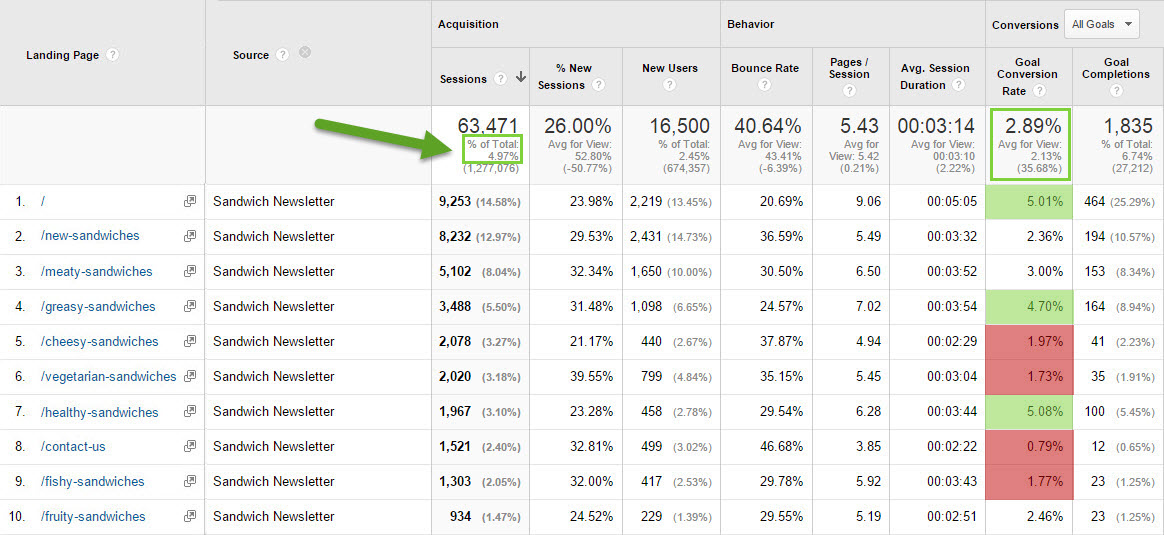
You can see that only 4.97% of total traffic comes from this newsletter but it’s still generated over 60,000 users so it’s well worth analysing. You can see the behaviour of traffic from newsletters is very different to the usual traffic to the website when you compare the statistic for each metric with the average at the top. The most important metric to focus on is the conversion rate. You can see that people who read the newsletter perform well when they land on the homepage (“/”), the greasy sandwich page, or the healthy sandwich page.
To get this information, we need to use a secondary dimension for the “source” of the traffic. You can select this from the secondary dimension tab shown below:
Then an advanced filter needs to be used to filter out any “Source” which mentions the word “newsletter”:
![]()
The first primary dimension in this example is then “landing page” and the secondary dimension is “source”. We’ve filtered all “sources” to only include the word “newsletter” to look at the landing page statistics for just the newsletter source. This filter could have been a negative filter to eliminate some sources and can run on regular expression language for complex filtration.
By visiting other sections of Google Analytics you can run reports on other primary dimensions and apply another secondary dimension to segment further. To split by three or more dimensions then you can use custom Analytics reports which can be saved and even automatically emailed out each week or month for reporting purposes.
Try splitting by the secondary dimension “medium” to see differences between direct, paid and organic traffic on each landing page. You can use a landing page filter if you wish to focus on a single landing page to make things clearer, like in the example below:


This results in a view of a single landing page showing statistics for all the different mediums of traffic. It’s a very useful tool for reviewing your sales channels:
In the example above, you can see that cost-per-click traffic (paid ad traffic) has a poor goal conversion rate on the healthy sandwich page. This indicates that something could be improved on the paid advertising channel to potentially save on advertising costs and increase profitability on the channel
Have you just learned something new?
Then join the 80,000 people who read our expert articles every month.

